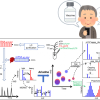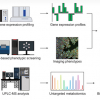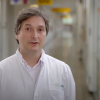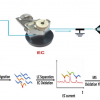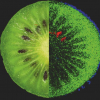
Ryan Julian is awarded the 2017 Biemann Medal for contributions related to his work developing and exploiting photo-initiated gas phase radical ion chemistry to probe peptide and protein structure. Several applications that rely on this chemistry have been developed by Ryan’s lab including methods for (1) examining 3D protein structure in the gas phase, (2) site specific identification of Ser or Thr phosphorylation, (3) identification of Cys residues and disulfide pairs, (4) identification of peptide epimers, (5) oligosaccharide characterisation and (5) monitoring energy transfer with UV action spectra.
Professor Julian has developed bond selective chemistry for initiating controllable radical directed dissociation (RDD). This is accomplished by photoexcitation with ultraviolet photons, leading to homolytic dissociation of specific bonds and the generation of a radical species. For example, photodissociation of carbon–iodine bonds with 266-nm photons occurs with high yield due to excitation of a dissociative excited state. If the carbon is covalently attached to a protein, then a radical is generated at that atom, and iodine radical is lost. The Julian lab has demonstrated that this chemistry can be used to create radicals in various types of biomolecules via dissociation of carbon–iodine, carbon–sulfur and sulfur–sulfur bonds associated with numerous chromophores. Importantly, any of these bonds can be photodissociated regardless of molecular size, charge state, charge polarity or sequence. The specificity inherent with this method allows for precise placement of an active radical in a controllable location, which can subsequently initiate fragmentation of the molecule via radical directed dissociation.




